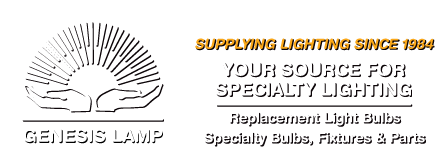Airport Lighting Systems, Airfield Lighting Company
Jan 2nd 2024
Airport Lighting Systems, Airfield Lighting Supplier
When it comes to ensuring the safety and efficiency of air travel, airport lighting systems play a crucial role. These systems and components, provided by Genesis Lamp, a trusted airfield lighting supplier, are designed to guide pilots during takeoff, landing, and taxiing.
Approach Light Systems (ALS) are an integral part of airport lighting systems. They provide visual cues to pilots during the final approach to the runway, helping them maintain proper alignment and descent. Another important component is the Visual Approach Slope Indicator (VASI), which uses a combination of red and white lights to indicate whether the aircraft is on the correct glide path.
Precision Approach Path Indicator (PAPI) lights further assist pilots by providing precise vertical guidance during approach and landing. Runway End Identifier Lights (REIL) serve as a visual aid in identifying runway thresholds from a distance.
Runway Edge Light Systems ensure clear visibility of runway edges, enabling safe navigation even in low-light conditions. In-runway lighting enhances visibility for pilots during takeoff and landing rollouts.
Runway Centerline Lighting System (RCLS)
Touchdown Zone Lights (TDZL)
Taxiway Centerline Lead-Off Lights
Taxiway Centerline Lead-On Lights
Land and Hold Short Lights
To enhance situational awareness on runways, airports may also employ Runway Status Light (RWSL) systems that use red lights embedded in the pavement to indicate when it is unsafe for an aircraft or vehicle to enter or cross a runway.
Takeoff Hold Lights (THL)
Runway Entrance Lights (REL)
The control of airfield lighting systems plays a crucial role in ensuring the safety and efficiency of aircraft operations. With advancements in technology, various methods have been developed to operate approach light systems, runway lighting, taxiway lights, and other essential components.
One method of control involves pilot control, where pilots can manually activate or deactivate specific lighting systems through their aircraft's communication systems. This allows them to have direct control over the lighting conditions during takeoff, landing, and taxiing.
Another method is radio control. Air traffic controllers or ground personnel can remotely activate or deactivate medium-intensity approach lights (MIRL), runway lights, taxiway lights, as well as visual approach slope indicators (VASI) and/or runway end identifier lights (REIL). This enables precise control over the lighting configuration based on real-time operational requirements.
By utilizing radio control for airfield lighting systems, airports can enhance safety by ensuring optimal visibility for pilots during critical phases of flight. Additionally, this method allows for flexibility in adjusting the lighting conditions based on changing weather conditions or operational needs.
The operation of airfield lighting systems through pilot control and radio control provides efficient management of approach light systems and runway lighting. These methods enable precise activation and deactivation of various lighting components to enhance safety and optimize aircraft operations at airports.
Airport beacons play a pivotal role in guiding pilots toward airports by emitting bright rotating or flashing lights that can be seen from miles away.
In conclusion, these various components of airport lighting systems work together seamlessly to ensure safe operations at airports worldwide.
Airport/Heliport Beacons
Airfield taxiway lights play a crucial role in ensuring safe and efficient operations on the airfield. These lights, including taxiway edge lights, taxiway centerline lights, clearance bar lights, runway guard lights, and stop bar lights, provide visual guidance to pilots and ground personnel.
Taxiway edge lights are installed along the edges of the taxiway to outline its boundaries. They help pilots navigate during low visibility conditions and ensure that they stay within the designated path. Taxiway centerline lights, on the other hand, run down the center of the taxiway and assist pilots in maintaining proper alignment.
Clearance bar lights are used at intersections where aircraft need permission to proceed. These lights indicate whether an aircraft has been cleared to enter or cross a specific area. Runway guard lights are positioned at hold lines before a runway intersection to warn pilots that they must stop and obtain clearance before proceeding further.
Stop bar lights are installed at runway holding positions and serve as a visual indication for pilots to come to a complete stop. They enhance safety by preventing unauthorized aircraft from entering an active runway without proper authorization.
The use of these airfield taxiway lights not only ensures smooth traffic flow but also minimizes the risk of collisions or incidents on the airfield. Their clear visibility allows for better situational awareness for both pilots and ground personnel.
Taxiway Edge Lights
Taxiway Centerline Lights
Clearance Bar Lights
Runway Guard Lights
Stop Bar Lights
By partnering with Genesis Lamp, a reliable airfield lighting and replacement light bulb supplier, airports can maintain top-notch lighting infrastructure that keeps air travel smooth and secure for passengers and crew members.

